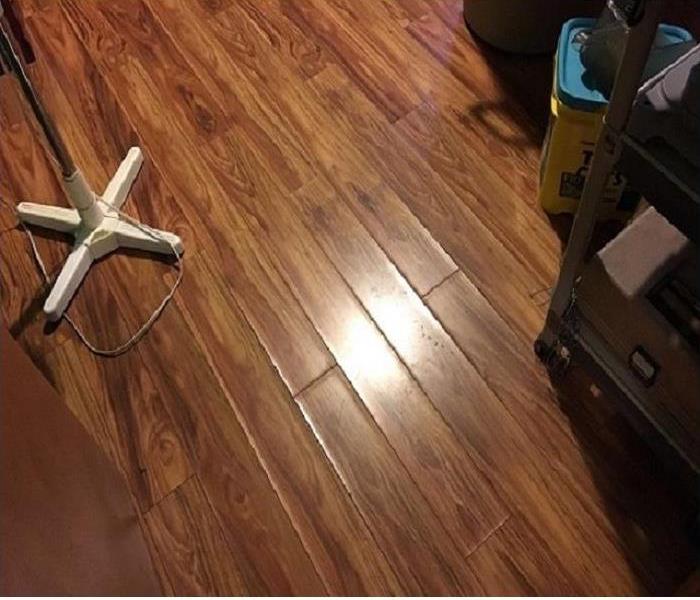Laminate Flooring Water Damage
3/27/2018 (Permalink)
SERVPRO Can Remediate Water Damage Regardless of the Type of Floor in Your Home
Water damage to laminate flooring is commonly seen and can be caused by such things as a slow leak from plumbing, a flood, spills and improper maintenance. Just about any way you can get water on a laminate floor can result in water damage. The damage can sometimes be covered under the manufacturer’s warranty, and other times water damage might be covered under your home owner’s insurance. Most often, however, water damage is not covered at all. Depending upon how severe the damage is, it might be correctable by hiring a professional water damage company such as SERVPRO. It could mean a plank replacement, and other times a bigger portion or even the entire floor may have to be replaced.
Water damage from appliance and plumbing leaks like water heaters, dishwashers, ice makers and washing machines in your home can cause your laminate flooring to buckle. Many times, these leaks are quite slow and go unnoticed. Slow leaks are not easy to identify since they are underneath the laminate where they will penetrate the core material of the laminate. While you might not be able to see the leak, a SERVPRO technician will be able to find excess moisture by using a moisture meter.
Water Damage from Concrete
Moisture can enter through the back of your laminate flooring with the damage from water resulting in cupping. A whole floor can cup from a concrete floor which is too wet. This can happen even when a vapor barrier is used under the laminate floor.
Every concrete floor should be tested for moisture before laminate floor covering is installed. Concrete that is newly poured needs to be allowed to cure for sixty days or more before the laminate is installed. There are several ways to test for moisture. Many should be performed by professionals like our technicians at SERVPRO, such as electronic testing. We will have the right equipment and training to do the job right.
Maintenance of Water Damage and Pet Damage
Improper wet cleaning of laminate flooring and spills can cause water damage in the form of swelling at the joints. Many times, these are puffy areas along the edge of the planks, will often cross between plank edges.
Most commonly, the cause of edge swelling over a big area is wet mopping or using popular floor mops such as the Swiffer Wet Jet. It can take up to a year or two of use before issues related to maintenance begin to show. Some floors might not ever show noticeable damage, while others will have extensive damage. Water damage is not often covered by the manufacturer of the laminate. Damage from pet urine and spills are generally localized and appear as welled areas between planks. This is a condition that is site related and not a problem with the laminate floor.
If you know or fear that you have a water damage problem with your laminate flooring that you need assistance with, please contact SERVPRO of Columbia, Montour & Sullivan Counties any time you need by dialing 570-759-0966. We can test for water damage and assess the extent of the damages so we can get your home back to normal fast.



 24/7 Emergency Service
24/7 Emergency Service
